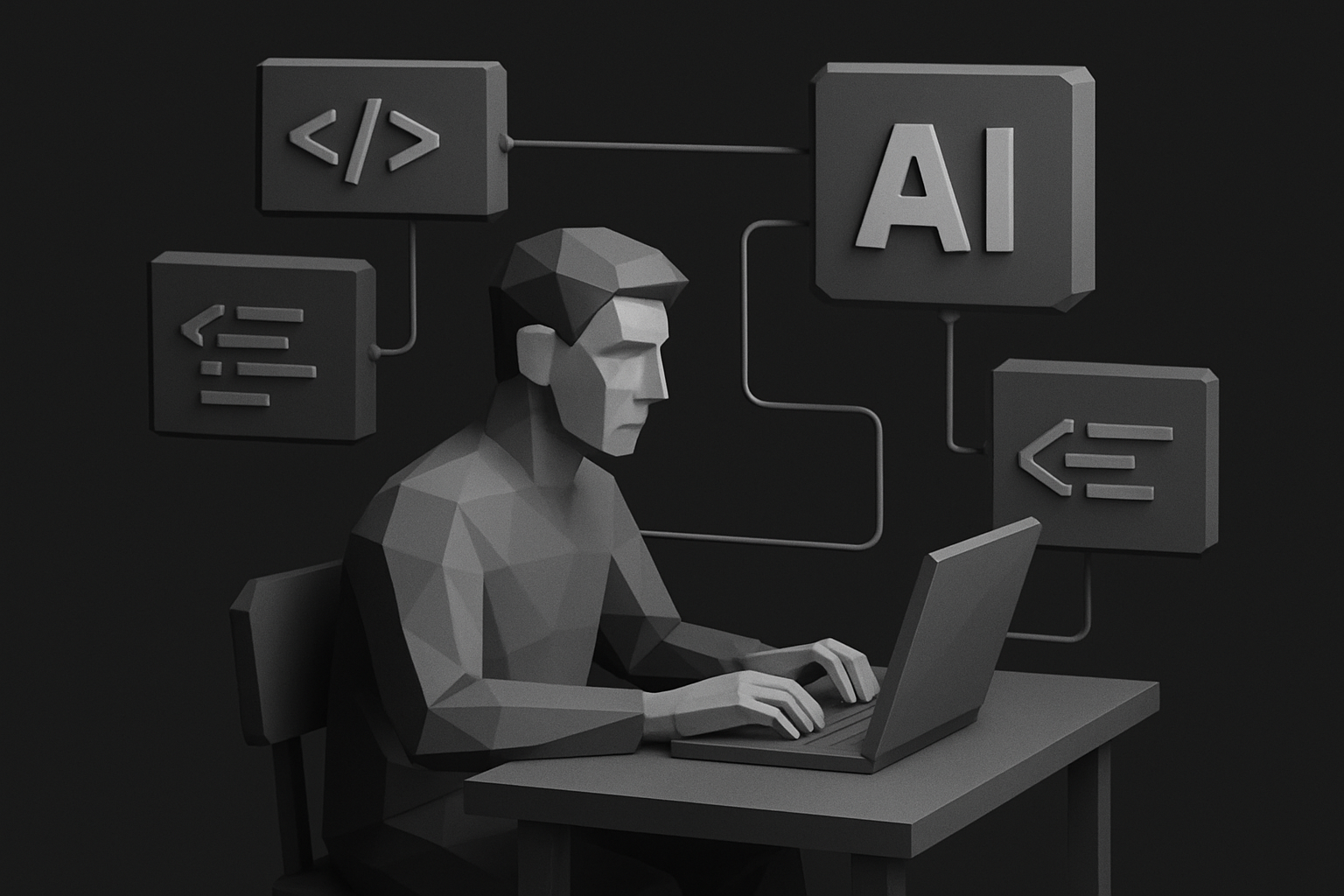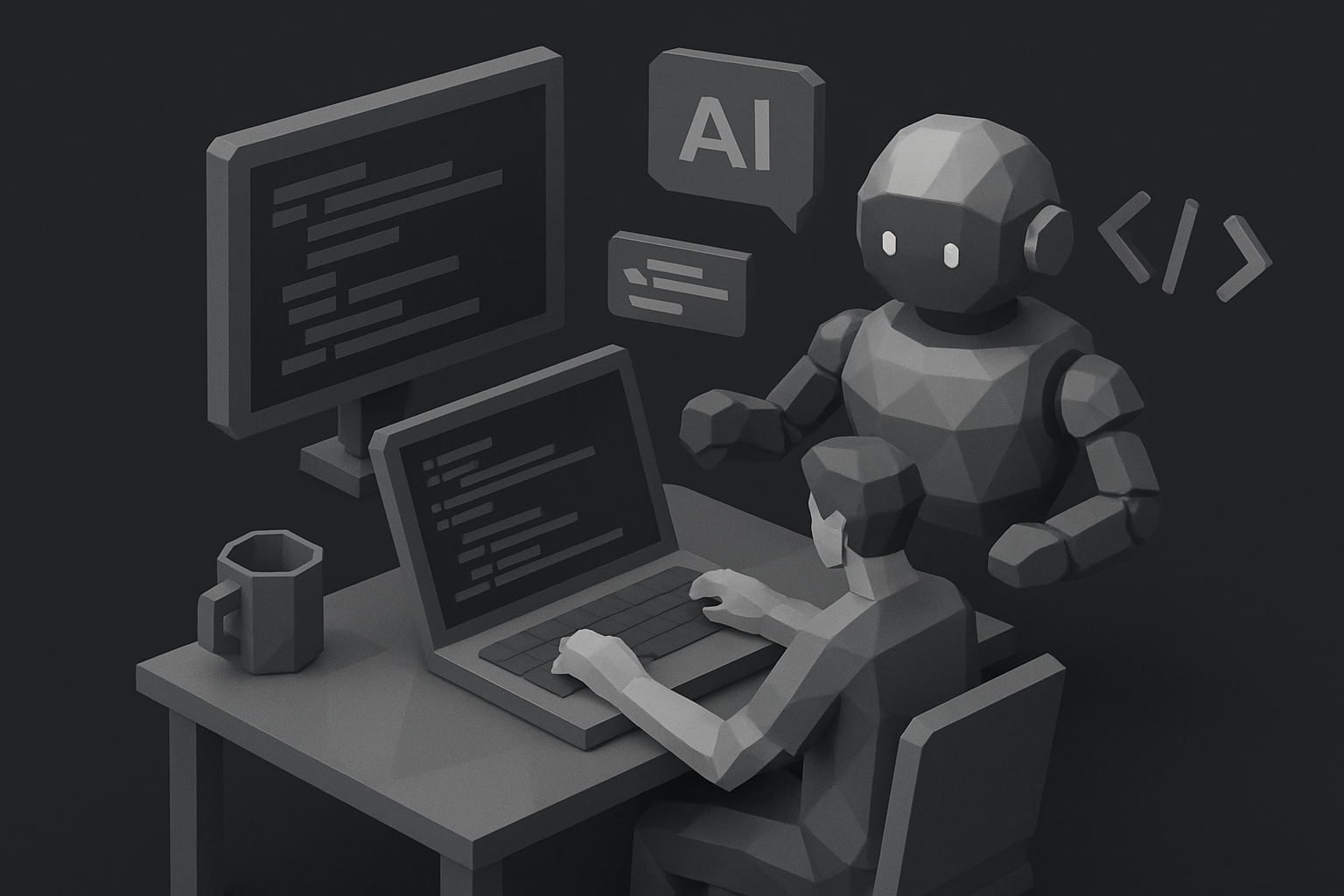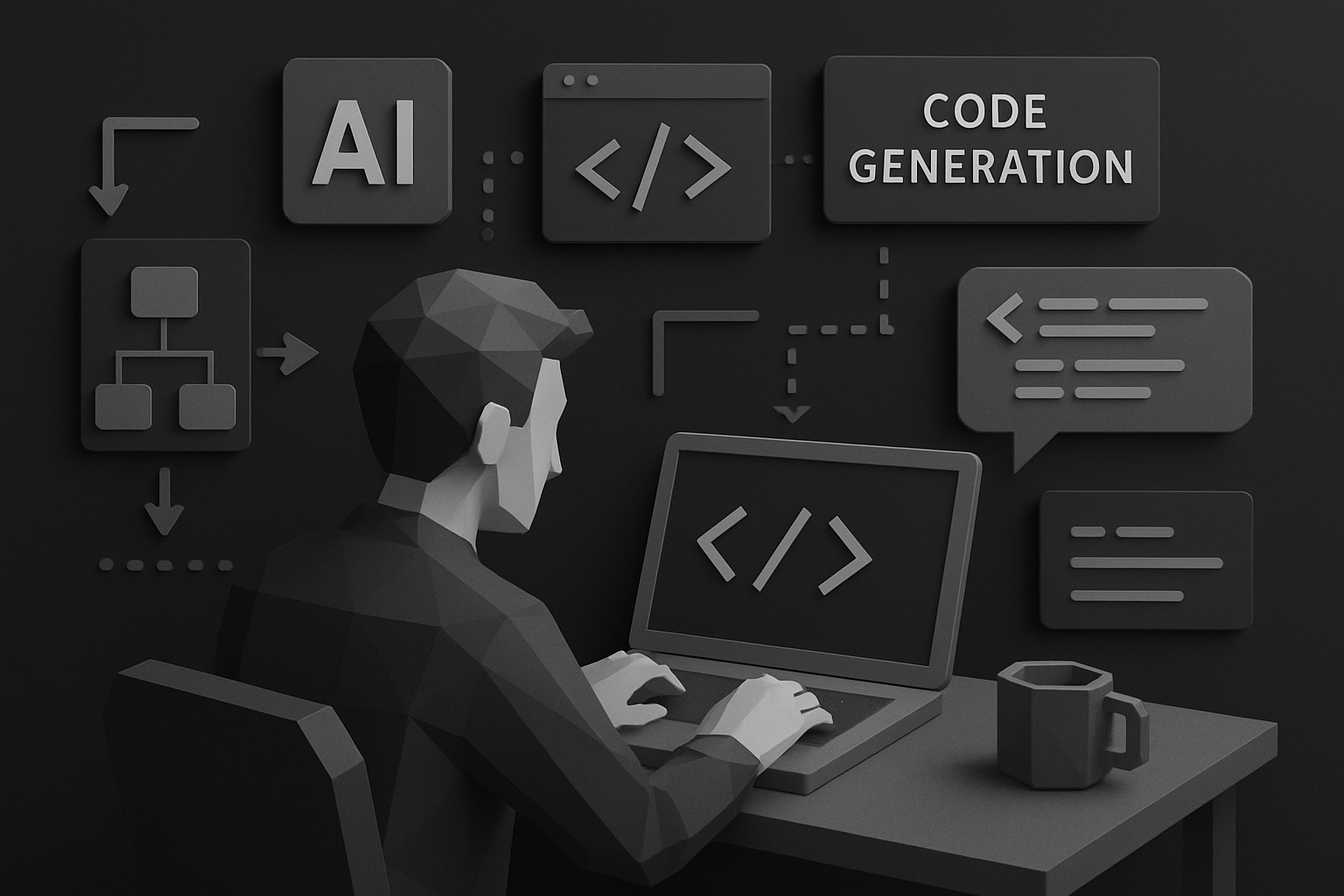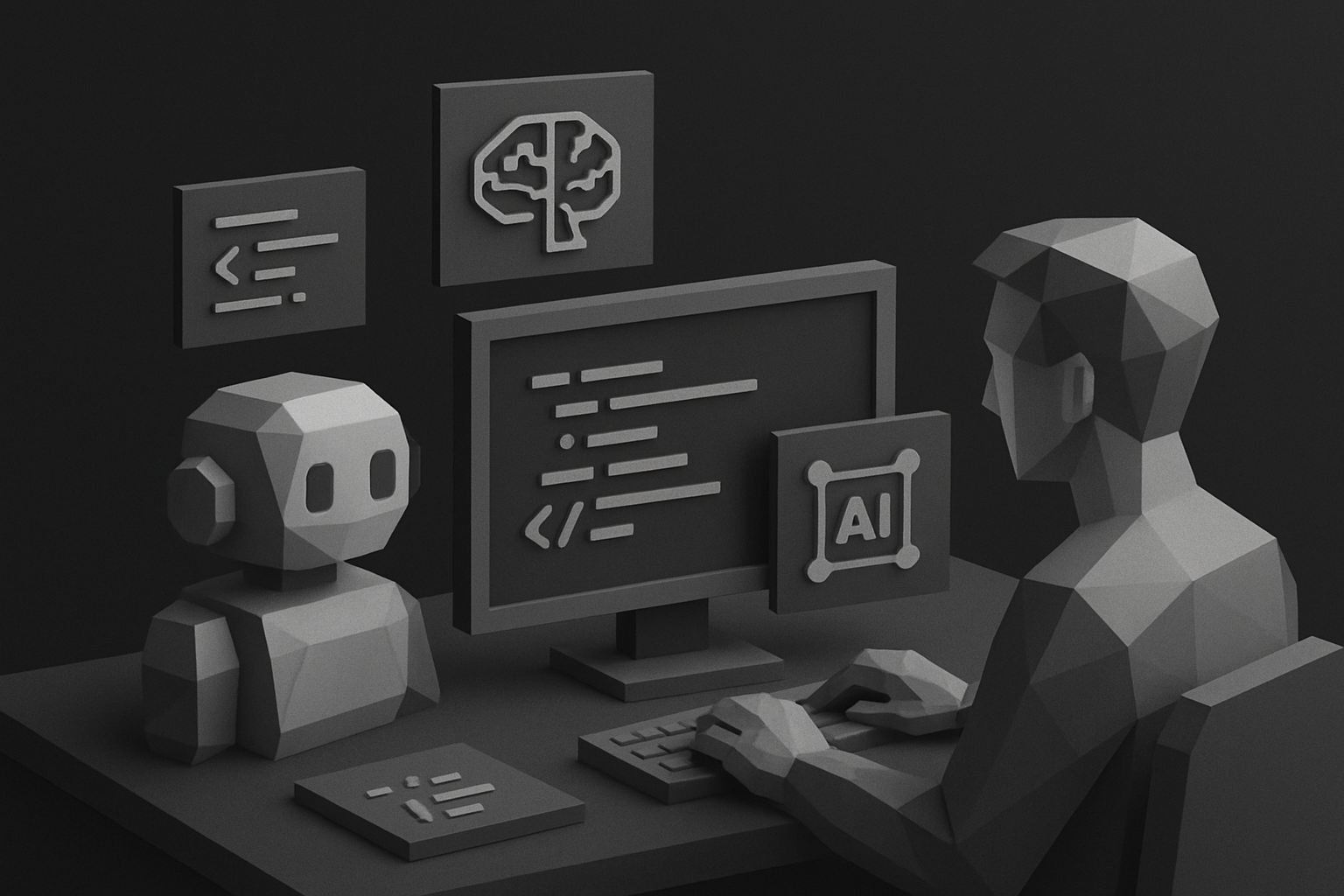The world of software development is changing fast as artificial intelligence becomes a true game-changer heading into 2025. Developers everywhere are looking for new ways to boost productivity, cut down on repetitive work, and write better code.
If you want to use ai to code more efficiently, you’re in the right place. This article explores 10 innovative strategies—ranging from AI-powered code generation and smart debugging to ethical best practices and continuous learning.
You’ll discover practical tips and step-by-step guidance to unlock the full potential of AI in your daily workflow. Ready to future-proof your coding skills? Dive in and see how these actionable methods can transform the way you build software.
The Evolving Role of AI in Coding
The landscape of software development is rapidly evolving as more teams use ai to code, fundamentally shifting how projects are built and maintained. Let’s break down the current state, challenges, keys to efficiency, and future outlook for developers leveraging AI.

How AI Has Transformed Software Development
By 2025, the decision to use ai to code is no longer optional—it's a necessity. AI’s integration has ushered in breakthroughs like natural language code generation, smarter code reviews, and context-aware debugging. Tools such as GitHub Copilot, AI-powered IDEs, and autonomous coding agents are now part of a developer’s daily toolkit.
Recent industry surveys reveal that over 60% of developers rely on some form of AI assistance. In fact, AI Adoption in Software Engineering highlights that 97.5% of companies have embedded AI into their workflows. This shift has driven faster coding, improved accuracy, and boosted collaboration across teams.
Challenges and Considerations for Developers
While many developers use ai to code, the journey isn't without hurdles. The sheer number of available tools can cause decision fatigue and overwhelm. Ensuring that AI-generated suggestions fit your project’s context and maintain code quality is another challenge.
AI “hallucinations” sometimes produce erroneous or irrelevant code, demanding vigilant human review. Balancing automation with creative problem-solving remains crucial. Developers must also address security, privacy, and ethical considerations to ensure AI-generated code is both safe and responsible.
What Makes AI Coding Efficient in 2025?
Efficiency is at the heart of why developers use ai to code. In 2025, it’s defined by speed, reliability, and ease of maintenance. Prompt engineering—writing clear and context-rich commands—unlocks better AI results. Seamless integration with CI/CD pipelines and support for multiple programming languages further streamlines workflows.
The shift from manual coding to automated processes means developers spend less time on repetitive tasks. Staying efficient also requires continuous learning to keep up with the ever-evolving AI tools and best practices.
The Future Outlook: Opportunities and Skills
Looking ahead, those who use ai to code will need to develop new skills like prompt engineering, effective AI tool evaluation, and code validation. Solo developers and teams alike can scale their projects faster than ever, thanks to autonomous AI agents managing routine coding tasks.
AI is also reshaping the developer career path, placing a premium on adaptability and lifelong learning. Embracing these changes gives professionals a competitive edge, ensuring they stay relevant and innovative in a rapidly changing tech environment.
10 Ways to Use AI to Code Efficiently in 2025
Ready to unlock the full potential of AI in your development workflow? Here are 10 actionable strategies to help you use ai to code more efficiently in 2025. Each approach is tailored to save you time, boost code quality, and future-proof your skills.

1. Leverage AI for Instant Code Generation
Imagine starting a new project and skipping the tedious setup. Now, you can use ai to code by instantly generating project scaffolds, boilerplate, and reusable snippets. AI-powered tools like GitHub Copilot take your natural language prompts and convert them into working code, rapidly accelerating the early stages of development.
For example, you might need a CRUD API or an authentication flow. Instead of writing every line manually, you use ai to code and let the tool generate the initial structure. This approach can cut coding time on standard patterns by 30-40%, giving you more bandwidth for creative problem-solving.
However, over-reliance is risky. Always review and customize AI-generated code to fit your project’s unique requirements. Here’s a quick checklist:
- Review for context: Make sure the generated code aligns with your project’s needs.
- Refine and optimize: Tweak for performance and maintainability.
- Validate thoroughly: Test before integrating.
For a deeper dive into the top tools that enable this workflow, check out the Best AI Tools for Coding.
2. Accelerate Debugging with AI-Powered Error Detection
Bugs can grind progress to a halt. In 2025, you can use ai to code more efficiently by relying on AI-powered debugging tools that analyze your code in real time. These tools flag syntax errors, runtime exceptions, and even subtle performance bottlenecks before they reach production.
Imagine an AI agent embedded in your IDE, instantly identifying a potential null pointer exception or spotting a division by zero error as you type. This immediate feedback loop reduces the time spent on manual debugging and helps you resolve issues faster.
Consider integrating static and dynamic analysis tools driven by AI. For example, some platforms now offer suggestions for fixing detected bugs, allowing you to use ai to code and repair issues on the fly. Teams using these tools have reported up to a 50% reduction in bug resolution time.
But remember, validation is key. Always evaluate AI-suggested fixes to avoid introducing new problems. Make AI your debugging co-pilot, not your autopilot.
3. Streamline Code Reviews Using AI
Code reviews are essential but time-consuming. With AI, you can use ai to code and automate the initial review process. AI-based review tools check for style consistency, security vulnerabilities, and adherence to best practices, freeing up human reviewers to focus on architecture and business logic.
For instance, Amazon CodeGuru can analyze pull requests for CPU optimization opportunities. AI can also spot subtle bugs and suggest performance improvements, making your review process more robust.
Here’s a sample workflow:
- Submit code for AI review.
- Receive feedback on common issues.
- Apply fixes, then escalate complex cases to human reviewers.
Data shows AI catches up to 70% of common code issues before a human ever looks at the code. However, balance is crucial. Don’t let automation replace human judgment; use ai to code smarter, not blindly.
4. Enhance Code Quality with AI-Driven Refactoring
Maintaining clean, efficient code is a long-term investment. In 2025, you can use ai to code by leveraging AI-driven refactoring tools that identify code smells, reduce complexity, and suggest optimal structures.
For example, imagine an AI tool that detects redundant logic or outdated patterns in a legacy codebase. It can automatically restructure code for improved readability and maintainability, reducing technical debt and making future updates easier.
Benefits include:
- Fewer bugs: Refactored codebases experience 25% fewer bugs over time.
- Scalability: Code is easier to extend and maintain.
- Consistency: AI enforces standards across teams.
But don’t set and forget. Always supervise major refactoring to ensure the AI doesn’t misinterpret business logic. Integrate these tools into your CI/CD pipelines for continuous improvement as you use ai to code.
5. Automate Documentation and Code Comments with AI
Keeping documentation current is a perennial challenge. Now, you can use ai to code and automate the generation of docstrings, inline comments, and API docs. AI tools analyze code context to create accurate, up-to-date documentation with minimal manual effort.
For example, an AI-powered system can generate consistent docstrings for every function in your Python project, ensuring new team members can quickly understand the codebase. As the code evolves, the documentation stays in sync.
Here’s how this boosts efficiency:
- Saves time: No more manual documentation drudgery.
- Improves onboarding: New developers ramp up faster.
- Ensures compliance: Meets internal and industry standards.
Always review and tailor AI-generated docs for clarity and accuracy. Use ai to code, but make the final documentation your own.
6. Optimize Prompt Engineering for Better AI Outputs
Prompt engineering is the art of communicating with AI. To use ai to code effectively, you need to craft clear, detailed prompts that guide the AI toward the desired outcome.
Let’s compare two prompts:
- Vague: “Write a login function.”
- Specific: “Write a Python function using Flask that authenticates users with JWT and returns error messages for failed logins.”
The second prompt yields far better results. Iteratively refining your prompts is essential for complex tasks. Some teams even maintain prompt libraries to streamline collaboration and knowledge sharing.
Developers who master prompt engineering see up to 2x improvement in output quality. Avoid common pitfalls like ambiguous requests or missing context. Use ai to code by treating prompt design as an essential skill in your toolbox.
7. Combine AI Assistance with Human Expertise
AI excels at repetitive tasks, but human creativity and context are irreplaceable. To use ai to code efficiently, blend AI assistance with your team’s expertise.
Integrate AI into your workflow for tasks like code generation, documentation, and reviews. Then, let humans focus on areas where intuition and deep understanding are vital, such as system architecture or novel algorithms.
Consider this approach:
- AI handles: Boilerplate, error detection, initial reviews.
- Humans refine: Business logic, architecture, edge cases.
Encourage team members to critically assess AI suggestions, fostering a culture of code ownership. This synergy helps you use ai to code while maintaining high standards and innovation.
8. Ensure Security and Ethical Use of AI in Coding
Security and ethics are front and center as you use ai to code in 2025. AI-generated code can introduce vulnerabilities or reflect biases from training data, so vigilance is non-negotiable.
Always audit AI outputs for security flaws and compliance. For example, if an AI suggests handling user data, verify that privacy standards are met. Regularly update your AI tools to stay ahead of new threats and evolving regulations.
Best practices include:
- Code reviews: Always validate AI-generated code.
- Bias checks: Watch for unintended biases in suggestions.
- Continuous training: Educate your team on responsible AI use.
Ethical coding not only protects your users but also enhances your company’s reputation. Use ai to code responsibly for long-term trust.
9. Use AI for Automated Code Repair and Maintenance
Maintenance can be a silent productivity killer. With AI, you can use ai to code by automating bug fixes and updates. AI tools now detect outdated dependencies, deprecated patterns, and common bugs—then suggest or even apply fixes.
Picture an AI agent monitoring your codebase and patching vulnerabilities as soon as they emerge. Integration with version control systems ensures seamless updates without disrupting your workflow.
Key benefits:
- Faster cycles: Reduce manual maintenance.
- Fewer incidents: Proactive bug fixes lower production issues.
- Continuous improvement: Your codebase stays modern and secure.
Always review automated repairs before deployment. Use ai to code, but maintain oversight to ensure quality and stability.
10. Embrace Continuous Learning and Stay Updated on AI Tools
The AI landscape evolves rapidly. To use ai to code at peak efficiency, you must keep learning and adapting.
Stay connected to developer communities, attend webinars, and subscribe to updates from major AI tool providers. Experiment with new features and share your findings with your team.
Teams that prioritize continuous learning adapt 40% faster to new technologies. Building a habit of regular experimentation and knowledge sharing ensures you stay ahead of the curve.
Encourage a growth mindset within your team. Use ai to code not just as a tool, but as a catalyst for ongoing professional development and innovation.
Key Strategies for Maximizing AI Coding Efficiency
Unlocking maximum efficiency as you use ai to code means more than just adopting tools—it’s about crafting a workflow, making sharp tool choices, embracing a growth mindset, and steering clear of common mistakes. Let’s break down the key strategies every developer needs for 2025.

Building an Effective AI-Coding Workflow
To effectively use ai to code, you need a workflow that supports both speed and quality. Start by identifying which repetitive tasks can be automated—think code generation, documentation, or testing. Integrate AI coding assistants directly into your IDE and CI/CD pipelines.
- Choose tools that fit your stack and team size.
- Automate tasks but always review AI outputs.
- Set up feedback loops between AI suggestions and team members.
For a step-by-step guide on establishing this kind of workflow, check out the Coding with AI: Practical Guide. Remember, a well-designed workflow lets you harness AI’s power without sacrificing code integrity.
Evaluating and Selecting AI Tools
Not all AI tools are created equal. To use ai to code efficiently, evaluate each option based on:
- Accuracy of suggestions and code quality
- Integration with your existing development stack
- Community support and documentation
- Cost and scalability for future growth
Run pilot projects to compare performance. Use benchmarks and feedback from your team to make final decisions. Stay flexible—revisit your choices regularly as the AI landscape evolves and new tools emerge.
Cultivating a Developer Mindset for the AI Era
Success as you use ai to code depends on having a growth mindset. Stay curious and open to new possibilities. Experiment with new AI features, and don’t be afraid to try, fail, and learn.
- Share discoveries with your team.
- Participate in developer communities.
- Embrace change as a chance to level up.
To dive deeper into building this mindset, explore the Growth Mindset for Developers. A forward-thinking attitude ensures you’re ready for whatever the future of AI coding brings.
Overcoming Common Pitfalls When Using AI to Code
Even the best tools can backfire without proper oversight. When you use ai to code, avoid these common issues:
- Over-reliance on AI suggestions without review
- Failing to configure or update tools regularly
- Ignoring licensing and code ownership concerns
- Letting code quality slip due to automation
Mitigate risks by pairing AI with strong validation processes. Always test, review, and stay aware of your tools’ limitations. This balanced approach keeps your codebase robust and future-proof.
Frequently Asked Questions About AI Coding Efficiency in 2025

What Are the Best AI Tools for Coding in 2025?
Choosing the right tools to use ai to code can be a game changer for productivity. Leading platforms include GitHub Copilot, Amazon CodeGuru, and Tabnine, all of which offer real-time code suggestions, error detection, and automated reviews.
When selecting an AI tool, consider accuracy, integration with your tech stack, and community support. According to a recent study on AI's impact on developer productivity, developers using AI assistants like Copilot completed tasks up to 55.8% faster. Comparing features and user feedback helps you pick the best fit for your workflow.
How Can Developers Ensure AI-Generated Code Is Reliable?
Reliability is crucial when you use ai to code. Always review AI-generated code for correctness, security, and adherence to project standards. Implementing robust testing and manual code reviews remains essential.
AI can sometimes produce plausible yet incorrect solutions. A recent study on challenges in AI-assisted code generation highlights the importance of validation to catch subtle bugs or security flaws. Combining automated and human checks ensures your code meets high standards.
Will AI Replace Human Developers?
Despite growing capabilities, AI will not fully replace those who use ai to code. AI excels at automating repetitive tasks and offering quick solutions, but human creativity, intuition, and complex problem-solving are irreplaceable.
Think of AI as a collaborative partner. Developers guide, review, and adapt AI outputs, ensuring the final product aligns with business goals. The future points to increased teamwork between humans and AI, not replacement.
How Can Teams Stay Ahead with AI Coding Trends?
To effectively use ai to code, teams should foster a culture of continuous learning. Stay updated by joining developer communities, attending webinars, and sharing insights internally.
Experimenting with new AI features and tools helps teams adapt quickly. Encourage open communication about best practices, and regularly review workflows to incorporate the latest advancements. Staying proactive ensures your team remains competitive as AI evolves.
If you’re excited to put these AI coding strategies into action and want to build a business that works for you—rather than the other way around—you’re in the right place. We’ve covered how AI can save you time, boost code quality, and help you stay ahead as the tech landscape evolves. But efficient coding is just one piece of the puzzle. If you’re ready to take the next step toward creating your own digital products and building a sustainable, one-person business, I encourage you to Get Started—your future self will thank you!